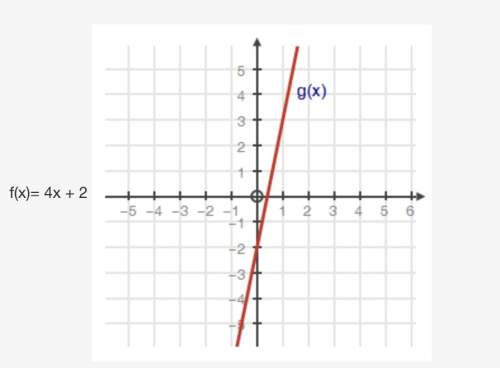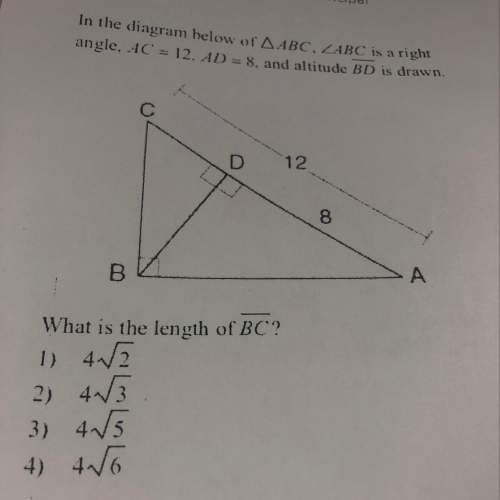In the diagram, g ∥ h, m∠1 = (4x + 36)°, and
m∠2 = (3x – 3)°.
Lines g and h are pa...

Mathematics, 23.05.2020 01:58 sheram2010
In the diagram, g ∥ h, m∠1 = (4x + 36)°, and
m∠2 = (3x – 3)°.
Lines g and h are parallel and diagonal down to the right. A horizontal line cuts through lines g and h. Another vertical line goes through lines g and h and the horizontal line. At the intersection of the vertical line with line h, the bottom left angle is angle 1 and the bottom right angle is angle 3. At the intersection of the vertical line with line g, the uppercase left angle is angle 2.
What is the measure of ∠3?
21°
60°
120°
159

Answers: 3


Another question on Mathematics

Mathematics, 21.06.2019 12:30
And explain how you got it so i can understand future problems : 3
Answers: 1

Mathematics, 21.06.2019 17:30
Enter the missing numbers in the boxes to complete the table of equivalent ratios.time (min) distance (km)? 36 9? 1512 ?
Answers: 3

Mathematics, 21.06.2019 18:00
Jose predicted that he would sell 48 umbrellas. he actually sold 72 umbrellas. what are the values of a and b in the table below? round to the nearest tenth if necessary
Answers: 2

Mathematics, 21.06.2019 19:50
The graph shows the distance kerri drives on a trip. what is kerri's speed . a. 25 b.75 c.60 d.50
Answers: 1
You know the right answer?
Questions


Chemistry, 13.07.2019 14:40


History, 13.07.2019 14:40

Mathematics, 13.07.2019 14:40


Biology, 13.07.2019 14:40

English, 13.07.2019 14:40


History, 13.07.2019 14:40

Mathematics, 13.07.2019 14:40


Biology, 13.07.2019 14:40

Biology, 13.07.2019 14:40

Biology, 13.07.2019 14:40

Mathematics, 13.07.2019 14:40

Mathematics, 13.07.2019 14:40

French, 13.07.2019 14:40


Mathematics, 13.07.2019 14:40





